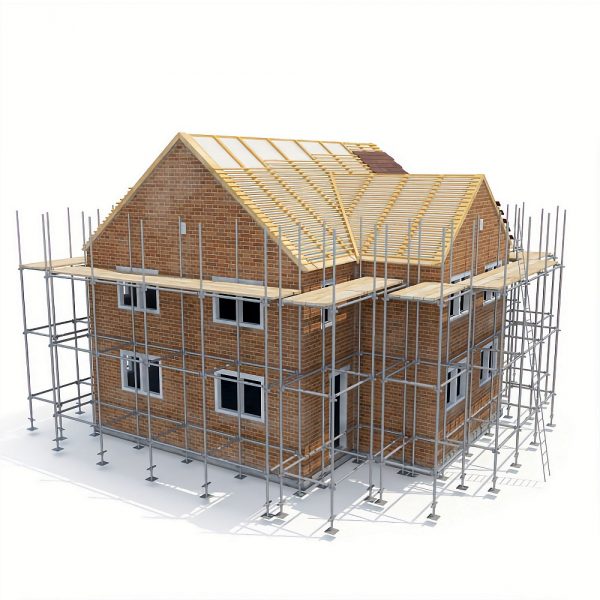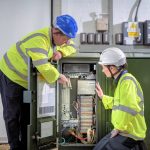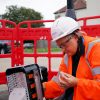H2 2019 – Full Fibre Broadband Covers 83% of New Build Homes

The latest independent H2 2019 analysis of broadband coverage among UK new build homes has indicated that 83% of houses constructed last year were connected to a “full fibre” (FTTP) broadband ISP network (up from 73% in 2018), which rises to 96% for 30Mbps+ “superfast broadband” services (up from 95% last year).
The situation, as highlighted by the latest independent model from Thinkbroadband (examination of new build postcodes), is clearly improving but we’d still recommend that purchasers always get the property developer to confirm in writing what kind of broadband connectivity you can expect to receive before handing over any money.
Most of the major home builders (e.g. Home Builders Federation) have already entered into partnerships with operators (BT and Virgin Media etc.) to better facilitate the roll-out of full fibre and slower hybrid fibre (FTTC / HFC DOCSIS) based broadband technologies. At the same time Openreach has made it even cheaper to deploy their FTTP network into some of the smallest developments (here).
Advertisement
Meanwhile the UK government have long been advising councils to ensure that they factor superfast broadband into local planning approvals for new build developments, although such things often take years to have an impact (i.e. planning permission tends to be granted a long time before the work itself actually begins and then the build phase can take years).
On top of that some property developers still say that deploying fibre broadband services can, in some areas, be prohibitively expensive (e.g. remote rural locations), although this hasn’t stopped many of those same companies from raking in big annual profits. Nevertheless more and more new homes are arriving with superfast and / or full fibre availability as standard, which is good.
New Build Broadband Cover by Speed and Technology (H2 2019 Data)
| New Premises | % Superfast 30Mbps+ | % Ultrafast 100Mbps+ | % Full Fibre (FTTP) | % Under 10Mbps USO |
| UK 2019 (151,275) | 96.1% | 85.1% | 83.3% | 3.2% |
| UK 2018 (207,916) | 95.2% | 76% | 73.3% | 4.1% |
| UK 2017 (162,415) | 93.4% | 55% | 47.5% | 5.7% |
| UK 2016 (183,280) | 91.9% | 46.7% | 37.2% | 7.1% |
NOTE 1: The ultrafast figure above predominantly reflects coverage by FTTP, HFC DOCSIS (Cable) and some G.fast based networks; mostly delivered via Openreach (BT) and Virgin Media. Meanwhile Hyperoptic, Community Fibre, GTC / OFNL and a few other altnets will also have an impact.
NOTE 2: Some small / individual developments (e.g. personal single house projects) or property conversions may be missed by this data.
NOTE 3: The historic figures may change by the next update as related data is frequently being revised / updated.
NOTE 4: The 2019 data is still missing November and December 2019 as the ONS postcode data table has yet to be released.
We should point out that the Future Telecoms Infrastructure Review (FTIR) proposed a couple of big changes in this area, not least of which was a plan to mandate Gigabit capable broadband connections for new build homes and making it easier for network operators to access buildings where landlords fail to respond (details in our Budget 2018 news).
Sadly we’re still awaiting an outcome to the related consultation on new build homes. The focus on Brexit (inc. all the related political upheaval), a recent General Election and the difficulty of introducing such measures seems likely to be impeding its progress.
Advertisement
In time the problems highlighted in this article should resolve themselves but for now a gap will continue to exist and that may be more noticeable in rural areas.
Mark is a professional technology writer, IT consultant and computer engineer from Dorset (England), he also founded ISPreview in 1999 and enjoys analysing the latest telecoms and broadband developments. Find me on X (Twitter), Mastodon, Facebook, BlueSky, Threads.net and Linkedin.
« Investment Firm Blackstone to Pump Money into UK Broadband
New UK Homes Ombudsman’s Remit to Cover Broadband Speed »























































Only worthwhile if the appropriate in-home infrastructure is provided though as Mark says.
My new build has FTTP. It also has zero Ethernet connectivity and the FTTP terminates under the stairs meaning there’s a radius of about a metre around the ONT where I can actually get full speed out of 300 Mb, let alone the higher speed tiers coming soon.
I’m sure you picked it for a reason but thats a poor setup. Even improving wifi standards only get you so far.
I’ve read Openreach PDFs for developers and they do recommend Ethernet is run to various rooms as well as provision for a ceiling mounted access point running from the ONT location, of course if a developer doesn’t want the expense and/or doesn’t follow the guidelines then people will be stuck with something that isn’t very practical.
I’m not in new build but it was relatively easy to get Ethernet into the lounge and into the loft for an access point, so with a new build it can’t be difficult so it is just laziness or indifference by the developers.
Building regulations need updating so it is done correctly.
I agree, that is very poor. We would expect to put a lot of Cat6e into any building we touch wether it be for heating controls or data.
There should be mandatory data cable to every hallway in the house for a ceiling mounted access point as an absolute minimum. And really at least one point in every room.
BT/OR are trying with their guidance the trouble is most site electricians don’t really understand data systems and it really comes down to the dreaded spreadsheet from the QS when the game is how many lines can be deleted.
Still look on the bright side – at least you have FTTP to the outside world!
I didn’t pick that set up. Wasn’t aware of it until after the contract had been signed.
Yes, it’s abysmal. I am not happy, not least because ‘BT/Broadband cabling’ was explicitly listed in the specifications.
Incidentally there were 7 phone sockets here. One under the stairs and then 6 others dotted around. ONT has no battery backup so they’re all worthless but, hey, 7 phone sockets and zero data ports: yay!
@CT – ethernet up the phone wiring?
3 pair cables. 100Base-T only.
Also: daisychain. No good unless placing a switch at every port to form a series of point to point links terminated with active devices.
Would be 100Base-T shared between all 7 ports.
Sad to hear ref your newbuild. Hoepfully thats the worst aspect for you of the shonky cost cutting practices that are endemic in our building trade.
I’ve mentioned this before on this and other forum, Installation of data cabling would cost very little at first fix during build, developers and planners dont have to go crazy but a simple expandable basic network, would be better.
Your ONT hidden away under the stairs would be ideal really IF they’d provisioned for data. Perfect spot for an easy cable run upstairs.
The build quality and rest of the property is excellent. It’s so good, in fact, that it destroys WiFi rapidly 🙂
It’s a local developer, not a mass-market one, and apart from whomever made the decisions on the phone points couldn’t be happier.
Thanks guys.
No way to tie cat6 & pull it through the walls with the old cables?
Totally relate to the the Wifi issue, while renovating ours, we chose the thickest water resistant foil backed plasterboard coupled with lots of foil sandwiched insulation between joists etc.. result oops metal foil clad rooms inside a 1 metre thick walled stone building, sigh. fortunately nothing some nice tech gadgets and cables couldnt fix.
Already tried that, Joe.
Existing cables are fixed/plastered in.
None of this is new. My estate of 104 houses was built in 1999 and 2000 by Barratt Homes with Telewest providing the cable service, so far so good – except that Barratt didn’t prewire the houses. It would have been nice to have provided power sockets under the stairs for that area to be used for the termination box and hub, and run Ethernet cabling to at least two rooms such as the lounge and amster bedroom upstairs, but the cheapskate developer didn’t do that.
@Carl thats typical!
All house specs are different but most new ones will have voids (boxed in soil pipes etc). Usually there is at least one for the mains wiring. Possibly identified from the loft, power cables to an ensuite etc. May need to pull back optical and move ONT to more appropriate place or possibly connecting optical cable up the outside wall to loft space (OR external connector) or Ethernet from a repositioned ONT to loft where you tap into the upstairs ring main for power and can lose the ONT, Hub etc on a mounted board. By use of a switch with PoE you could then use the loft and any voids to feed suitable PoE APs/Mesh locations.
If you take off the telephone sockets, you’ll find that the telephone wires are Cat-5e. Then it’s just a matter of replacing them with rj45 sockets and you’re good for multigig ethernet. Since telephone is not point to point, you will need a few strategically placed switches and dual port sockets in order to extend to more than one location, and some guesswork is required to know which cable leads to which location.
As already stated Spurple the cables are 3-pair telephone cable.
As also already stated I am aware of how to convert a daisychain into a series of point to point links. There would be no guesswork as to what goes where, it is quite logical and regardless I can send pilot tones down wires having cut them.
Sadly academic given the cabling. If it were that simple I’d have already done it.
Meadmodj: the optical isn’t mine to pull back. I own the connection from the Ethernet port of the ONT onwards as that’s the demarcation point between the Openreach network and my in-home lack of cabling.
Messing with the optics == no-no.
With all due Roger_Gooner the situation in 1999/2000, some of which predates cable broadband in the UK full stop let alone general availability, is quite different from the situation in 2020.
Data cabling in homes would have been incredibly niche then – most were still using internal dialup modems and it would be years before they had anything to connect to the cables as operators were handing out modems, not routers, and home routers were uncommon.
As far as being cheap goes it’s Barratt. That’s kinda always been their thing, and I speak having owned one.
@CarlT. I appreciate moving the ONT was a little radical but assumed you would want a long term solution and not want lots “stuff” under the stairs unless its boxed in. “Inappropriately” placed ONTs or connectivity issues will become more common as we move forward. Is it possible to run a fibre to a more appropriate placed use media converters so that you can site Router/Switches/UPS/4G backup out of sight, especially in a new home?. Shame there was no dedicated comms cupboard provided, hence why I like the flexibility the loft provides.
There is of course Powerline, you have new wiring and as long as it was short on the same ring it may perform. 2Gbps Powerline are currently rare in UK but are coming.
TP-Link TL-PA9020PKIT 2-Port Gigabit. Ordering a set to try them.
No media converter option available, it’s PON, and, regardless, would need a new cable run.
Even on the same extension cable powerline wouldn’t be much good.
Sorry I meant short Cat6 patch from ONT Ethernet WAN to Ethernet on media converter.
Understood but still requires new cable, albeit fibre rather than copper. Also complicates deployment unnecessarily by adding an extra active component.
If I were to go that way I’d place a switch or wired router with SFP+ ports in it under the stairs, not a media converter, to both take care of the media change and provide port density. I’d terminate the fibre on a switch, on the other side, too.
You have, however, given me an idea for a way to extend the cabled domain without extensive attacking of walls – thank you!
Sigh, cant edit
‘DUCTED’ network, would be better.
I would like to know when people like my father in-law will get any type of broadband as a farmer in peak District . JUST FORGOTTEN !:(
What do you think of Persimmon deciding to set up their own ISP, FibreNest? Means that Persimmon can lock their residents into yearly contracts, with no hope of competition from Virgin / BT because Persimmon don’t grant them access to the development. Surely this is breaking some consumer rights law?
Hey blogger! your website is so smooth and easy to use. It was a great experience to visit your website. Your blog is fantastic. Waiting for more blogs.
https://www.aucklanddatacabling.co.nz/